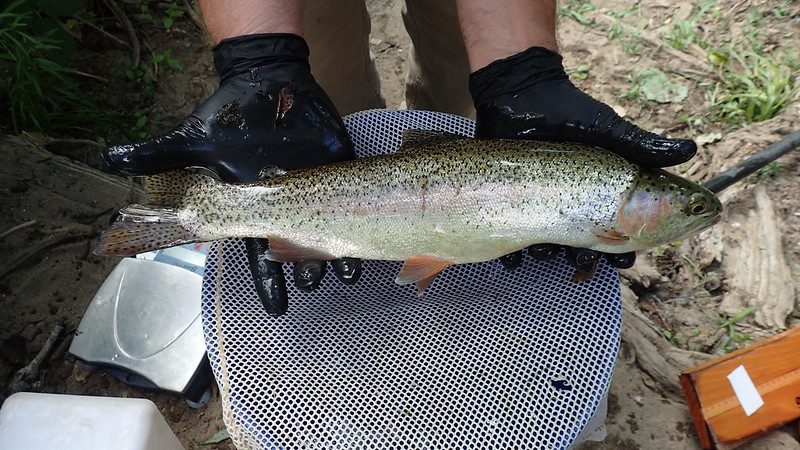Monday July 17, 2023

Anyone juggling a full schedule can relate to the stress of making sure everything gets done on time. But while for humans, a failure to be on time may mean a missed appointment, for wildlife, not being on time can be a matter of life and death. Plant and animal phenologies, or the seasonal timing of natural events, have evolved to cue in on seasonal changes to make transitions to different parts of their lifecycles. For Pacific salmon (Oncorhynchus species), the timing of their migration from rivers where they were born to the ocean is influenced by environmental cues such as temperature and flow. However, climate change is causing some of these cues to occur at different times, potentially leading to shifts in the timing of smolt migration. Simultaneously, the oceanic plankton that young salmon eat may also be shifting their seasonal patterns. These sliding schedules may lead to mismatching of seasonal events, causing young salmon to arrive in the ocean only to find an empty plate. This offset in schedules could have significant and long-lasting impacts on salmon populations. To investigate this, researchers recently conducted a study examining changes in the timing of outmigration for 66 populations of Pacific salmonids representing six different species across North America (Wilson et al. 2023). By looking at the date of peak outmigration and the window of time over which outmigration occurs, they were able to search for trends in timing, and then compare these to shifts in the seasonal abundance of marine marine phytoplankton, a good measure of productivity in the ecosystems in which young salmon feed.
Some of the most prevalent impacts of climate change on ecosystems stem from changing phenologies that cause species that once relied on seasonal interactions with one another to have less overlap than they did historically. But, even within a species, different populations may have variations in the seasonal timing of their life histories, and these variations could provide a buffer against the impacts of climate change. Because Pacific salmon are found across a diversity of freshwater habitats ranging from California all the way north to the Arctic Circle, there is an incredible amount of variety in local adaptations, life histories, and phenologies.

By quantifying phenological change across populations representing all five species of Pacific salmon as well as steelhead (O. mykiss), the researchers found that some of the species of salmon showed rapid rates of phenological change in migration timing, whereas others showed little change. For example, chum (O. keta) and pink (O. gorbuscha) salmon – two species that go to the ocean shortly after hatching – showed average changes in the date of peak outmigration 7.8 and 5 days earlier per decade, respectively. Species that spend more time in rivers as juveniles, including coho salmon (O. kisutch) and steelhead, had much lower average rates of change in their peak migration timing, at only 0.1 and 0.5 days earlier per decade, respectively. Further, the two species with the greatest amount of diversity in migration timing – Chinook salmon (O. tshawytscha) and steelhead – showed the greatest shrinkage in their seasonal window of outmigration.
The main takeaway from these results is that the salmon and steelhead populations assessed in this study are experiencing shifts in their phenology at different rates. Plus, the data suggests that within each species, each population is responding differently to climate change. Comparison with the timing of the spring phytoplankton bloom showed that these events are occurring earlier each year, leading to a greater mismatch with salmon outmigration, which may lead to lower marine survival of salmon smolts as climate change continues.

For species known for their local adaptation and diversity, such as Pacific salmon, climate change is likely to have unpredictable impacts. However, as this study has demonstrated, salmon across the Pacific Coast of North America are already experiencing shifts in the seasonal timing of their outmigration. As the seasonal windows for outmigration narrow, and seasonal peaks of outmigration shift earlier in the year, salmon populations may face increasing challenges to survival. To address this, management will need to be resilient to the unpredictable changes that may occur, and should incorporate efforts to promote diversity in life history to help buffer against new challenges.
This post was featured in our weekly e-newsletter, the Fish Report. You can subscribe to the Fish Report here.
